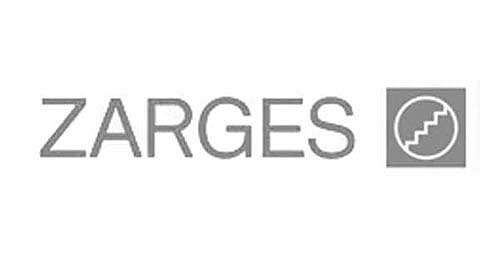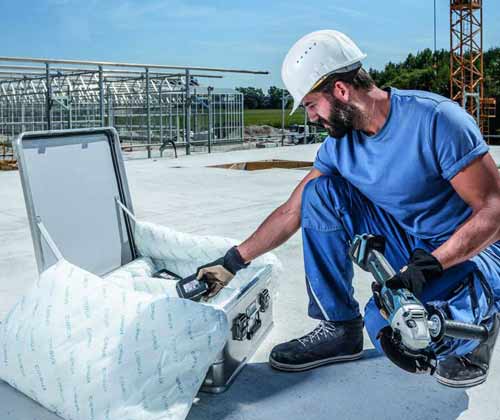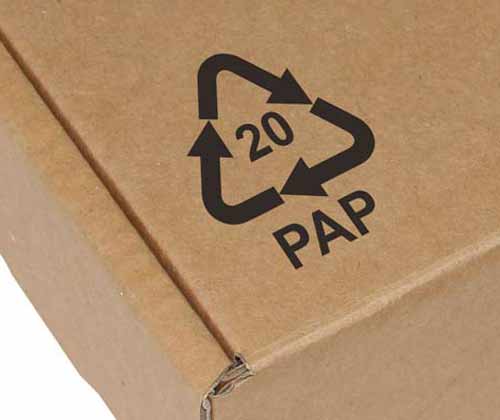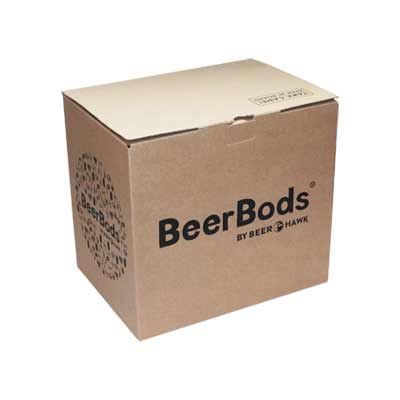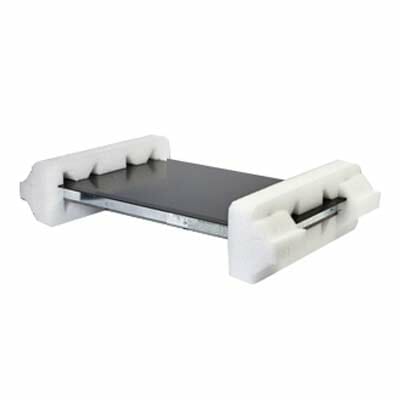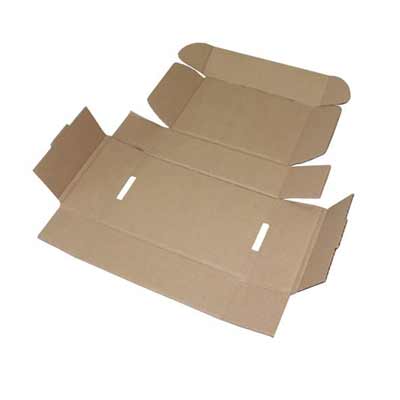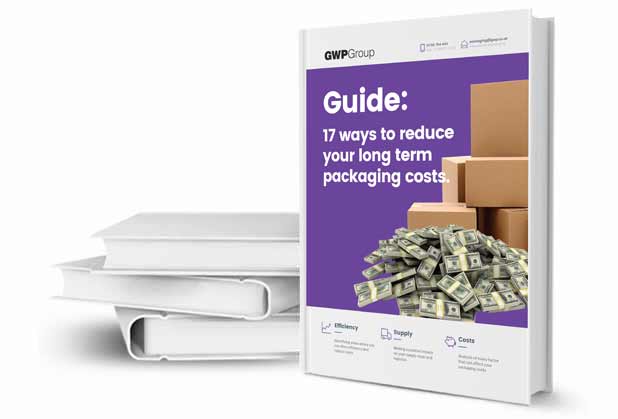What are corrugated board grades?
A detailed guide to corrugated board grades and cardboard types
Find out more about the key component of your corrugated packaging, and how it influences everything from packaging costs to performance.
If you use high volumes of packaging, chances are you are familiar with corrugated cardboard. If you don’t, it is impossible to go about everyday life without being exposed to cardboard at some point.
However, do you know the elements that determine how strong, or how expensive, corrugated cardboard is? What is it manufactured from? And what impact can this have on the success of your packaging?
This guide aims to explain and clarify everything you might need to know about cardboard. From flutes to GSM, liners to the number of walls, everything is explained.
Contents
Composition of material
How is corrugated material formed?
Before delving into the more technical details, it is helpful to highlight the process by which corrugated board is formed (see how cardboard is made here).
Essentially, a standard sheet of corrugated cardboard is composed of three components. These are a sheet of corrugated or “fluted” material in the centre, placed between two layers of paper, the outer and inner liners.
Each side of the fluted material is then glued to the flat paper liner during the manufacturing process. The glue fixes the flutes in position and adds rigidity and stability to the paper.
You can see a basic diagram highlighting the fluting and liners below.

Types of paper
Material used in the manufacture of cardboard
One of the key factors that defines the properties of the corrugated material is the type of paper used.
Despite the widespread use of cardboard, two main types of paper are generally used for the liners. These are known as Kraft and Test liners.
Kraft paper is manufactured from softwood trees. Due to the “virgin” fibres, it is both the strongest type of paper and also the easiest to print on. As a result, it is the most commonly used outside liner when selecting material to produce corrugated boxes and packaging.
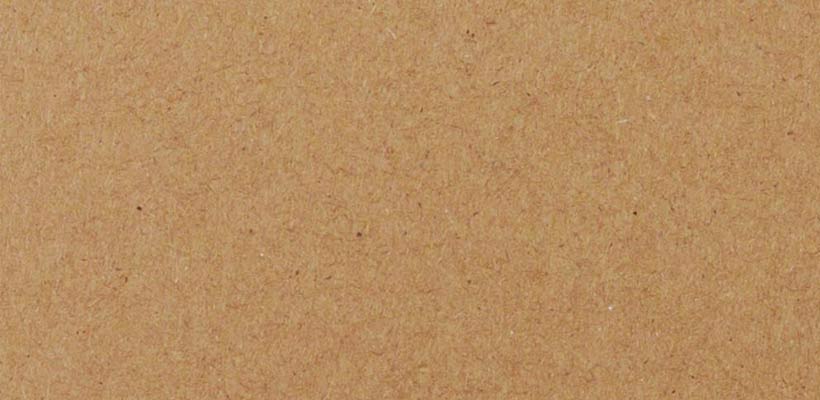
Test paper is actually a double-layered (or duplex) paper. Being recycled, Test paper is not as strong as Kraft or as easy to print on, so it is commonly used for the inside liner. It is, however, less costly than Kraft paper.

Each liner type is actually comprised of two distinct layers. A basic layer is used for adhesion and strength, whilst a finer “cover” layer is primarily used for improved aesthetics and to aid printing.
However, despite Kraft and Test liners being so popular, there are, in fact, several other options.
The available paper grades for outer and inner liners when manufacturing cardboard are as follows:
- Kraft (K): Virgin Kraft paper.
- Test 2 (T2): Partly recycled liner paper.
- Test 3 (T): Fully recycled liner.
- Chip (C): Waste-based liners.
- Fully bleached white (BW): Fully bleached Kraft liner.
- White top (WT): White coated recycled liner
- Mottled Kraft (MK): Mottled white Kraft.
- Oyster (OY): Mottled Test liner.
- Semi-chem (SC): Virgin fibres using neutral sulphite semi-chemical process.
- Waste-based (WB): 100% recycled fibres.
The final two paper types listed here are the most commonly used for flutes and are less often used for liners.
Please note, however, that this list is not exhaustive, and several other specialist papers are also available.
Paper weights and GSM
Variances between papers used
Once you understand the types of paper available and commonly used, it is also essential to consider the weights of paper.
This is, in fact, measured in the same way for all papers, meaning you may have seen “80 GSM” on the copier paper you use in your office or home printer.
The term “GSM” is an abbreviation of Grams per Square Meter.
In essence, if you took a square meter of the paper in question and weighed it, you would get the grams (e.g., the weight) of that paper for one square meter.
Therefore, if you are using a corrugated board with a 125 GSM Kraft paper liner, it is often referred to as 125K.
Common paperweights, when used for corrugated material at least, include the following:
- 115/125 GSM
- 140/150 GSM
- 185/200 GSM
- 300 GSM
Again, this list is not extensive, and other weights may be available.
Wall types
Construction of corrugated cardboard material
Besides the varying paper weights and types, the type (and number) of fluting must also be considered.
At a basic level, corrugated board is composed of two liners and a single layer of fluting. This is known as a “single-wall” board. You can see a diagram indicating this below.

However, an additional fluting section and additional liner can be added to make what is known as “double-wall” or “double-walled” material.
This effectively adds extra rigidity and strength, making it suitable for packaging heavier items and adding additional protection for items that may be more delicate or expensive.
You can see an example below.

Finally, if the items you are shipping are particularly heavy or large (for example, automotive parts, industrial equipment, etc), then a “tripe-walled” grade can also be used. As the name suggests, this adds a section of fluting and a liner.
Also referred to as “Tri-Wall” (the brand name of the manufacturer), you can see a basic diagram of this below.

Flutes
Explanation of corrugated flutes
The final aspect of the corrugated board that can affect its performance (and weight and cost) is the flute type.
The flute is the “corrugated” section between the two liners, and by changing its height (and therefore the size of the flutes), it is possible to achieve different performance characteristics.
This can vary from very fine flutes, such as “E”, to manufacture lightweight retail cartons (which are very good to print on), through to a more coarse flute, such as “A” or “B” flute, which is more usually used for transit packaging.
As in the examples above, with double-walled material, it is possible to combine one or more flutes to create a grade such as an “EB” or “BC” flute. This can offer a rigid structure perfect for heavier items, whilst also allowing an improved aesthetic outer appearance and printing surface.

The flute itself is usually manufactured from a waste-based fluting (WBF – e.g., fully recycled material) or what is known as semi-chem fluting (SC).
Typical paper weights used for fluting are as follows:
- 90 GSM WBF
- 105 GSM WBF – Most common flute standard
- 112 SC and WBF
- 150 SC and WBF
- 175 SC and F
There are also several commonly used flute profiles or sizes, which are as follows:
- A Flute: 5mm
- B Flute: 3mm
- C Flute: 4mm
- E Flute: 1.5mm
- F Flute: 1mm
- BC Flute: Double-wall – 6mm (combination of B & C flutes)
- EB Flute: Double-wall – 4.5mm (combination of E & B flutes)
Again, this list is not exhaustive, and is complicated by the fact that many producers of corrugated material make very similar products which are given arbitrary names (and are exclusive to that manufacturer).
Board grade meaning
Corrugated board descriptions and explanations
All of this information enables you to create an abbreviation that describes the type of board being used.
For example, if your material grade were using a 125 GSM Kraft outer liner, a 125 GSM Test inner liner, and a “B” fluting, this would be written as…
“125K/B/125T”
Similarly, a 150 Test outer lining, plus a 150 Test inner lining, with an “E” flute, would be described as…
“150T/E/150T”
This terminology would be easily understood by virtually any packaging manufacturer (or at least should be), and also allows you to fully understand the type of material your cartons are manufactured from.
Applications
Individual flute uses and information
Simply knowing how a corrugated board grade is manufactured and its components doesn’t necessarily enable you to make an informed choice about the type of material to use for your packaging.
As such, the information below provides a little more detail on each of the most commonly used flute types.
E flute
E flute is approximately 1mm to 1.5mm in thickness, providing a very fine flute. This not only offers excellent compression strength and crush resistance, but also ensures a high-quality surface for printing.
As a result, it is commonly used on smaller cartons, where high-quality print is required, as well as in die-cutting applications.
E flute has 90 flutes per foot and a thickness of 1/16th”.

B flute
B flute is one of the most commonly used types of cardboard for packaging applications. Being 3mm in thickness, it is exceptionally versatile and can be used in both die-cutting and regular case-making processes.
It gives good all-round performance in all types of packaging.
It typically has a total of 47 flutes per linear foot, including a thickness of 1/8th”.

C flute
Between 3.5mm and 4mm in thickness, C flute offers greater compression strength than B flute. This means it provides better stacking strength when used for lightweight products.
However, it can be prone to crushing if used in the wrong application.
C flute has 39 flutes per linear foot and a thickness of 3/16th”.

BC flute
Being 6mm to 7mm in thickness, this double-wall material combines both B and C flutes together. This gives a good all-round performance, making it common for producing boxes that offer a higher level of transit protection.
Due to this, only basic printing (such as flexographic) tends to be added.

EB flute
Around 4mm to 4.5mm thick, EB flute (as the name suggests) combines E and B flutes into a double-walled material. Due to utilising both a very fine (E) and relatively large (B) flute, this grade provides an excellent balance between transit protection, strength, and print finish.

Weights
Flute type weight table
As it is possible to vary several parameters when specifying the board type for packaging, such as paper weights, flute types, and the number of walls, it is actually possible to achieve similar performance with different board grades.
However, there are typical performance guidelines for the varying corrugated board grades that are often quoted.
These can be seen in the table below:
| Flute | Grade | Product weight |
|---|---|---|
| B or E | 125 K/T | 4-6kg |
| B or E | 150 K/T | 8-12kg |
| B or E | 200 K/T | 12-17kg |
| B or E | 200 K/ 300 T | 17-25kg |
| B or E | 300 K/T | 25-35kg |
| BC or EB | 125 K/T | 10-15kg |
| BC or EB | 150 K/T | 15-25kg |
| BC or EB | 200 K/T | 25-35kg |
| BC or EB | 200 K/ 300 T | 35-40kg |
| BC or EB | 300 K/T | 40-45kg |
Terminology
Technical terms associated with corrugated board grades
As a final point of reference or explanation, the following is a common list of terms related to board grades and corrugated material in general.
- Across flute: A unit of measurement which is used to measure corrugated (or other fluted material such as Correx®), the measurement is the opposite direction of the flute (so width).
- Backing liner: A compressible paper material which compensates for any irregularities on the surface which is sealed. This compressible material (usually pulp or news board) is typically adhered to the liner and provides a better finish (appearance), water resistance and extra strength.
- Blank: A flat piece of corrugated board that has been cut and scored, ready to make a box.
- Board grade: A grade given to corrugated board based on three elements: firstly, the weight and type of the outer liner, secondly, the kind of flute and thirdly, the weight and type of inner liner.
- Burst, damage: The term given to packaging containers which split or “burst” due to too much pressure (e.g., if stacked too high, the boxes lower in the stack may burst).
- Carton board: Board that is stiffer and thicker than boxboard. It has a medium to high compression and moisture resistance. Unlike cardboard, it is solid and not fluted.
- Chop edge (or just chops): The length of the board or sheet.
- Clay coat: A thin layer of kaolin coated onto corrugated board to improve its printing surface. Used on unbleached or natural Kraft paperboard.
- Corrugated: A material which is shaped into a series of parallel ridges and grooves.
- Edge crush test: A test that measures the cross-directional crushing of corrugated board. It provides information on a board’s resistance to being crushed.
- Deckle: The width of the board being run on a corrugator.
- Double-wall board: A combination of two layers of corrugated material (potentially different flute sizes) to provide a material with extra strength.
- Duplex: A type of paperboard made up of two layers; the exterior is often coated, which makes it more water-resistant, and it is often used for paper cups and plates and in the pharmaceutical industry.
- Enhanced fluting: A substitute for standard fluting that adds strength and performance to the material.
- FEFCO: The European Federation of Corrugated Board Manufacturers is a non-profit organisation which represents the interests of the corrugated industry.
- FEFCO case codes: A set of standard design patterns used within the corrugated board industry.
- Fibre: Packaging materials are made from moulded fibres, also known as moulded pulp.
- Flute: Paper that provides the central layer in corrugated board (cardboard). It separates the liners and provides the strength and rigidity.
- Fluting profile: The shape of the corrugations within the corrugated material.
- Grammage: Also referred to as GSM, the weight of paper is specified in grams per square meter (g/m²).
- GSM: An acronym for the measurement of grams per square meter.
- Kraft: Brown paper or paperboard produced from virgin pulp in the pulping process. It is made out of natural, unbleached wood fibres.
- Light-weighting: In packaging, light-weighting refers to the design of packages that reduce material use, thereby reducing weight and cost, while also minimising environmental impact.
- Liner: One of the paper materials which make up one part of the components in corrugated board. There is an inner and outer liner; the outer liner is usually of higher quality, as it is used for print finish.
- Mottled: A paper liner with an off-white appearance.
- Single face: One piece of fluting glued to one liner only.
- Single-wall: A double-faced, single-walled board consists of one part fluted paper (in the middle) and two materials (usually paperboard) bonded on either side of the fluted paper to give it strength.
- Slit edge: The edge of the sheet that has the flute running parallel with it. It is also known as the material’s width.
- Test liner: Recycled liner board that can be manufactured as a sheet with fibres that are similar throughout. Known as Homogeneous/Simplex or, as a combination of two layers with the outer layer being of better quality recycled fibre, this is referred to as Duplex or Multi-Ply.
- Tri-wall: Triple fluted corrugated board, which is used for its strength, flexibility, and eco-friendliness.
- Virgin material: A material which has not been processed in any form other than its original manufacture.
- Weight: Refers to the density of a material; see GSM for further information.
Summary
Understanding corrugated board grades
Hopefully, this guide has provided answers to any questions you may have had regarding corrugated board grades.
However, if you have any other queries or would like to verify that your packaging is being manufactured from the most cost-effective materials, please do not hesitate to contact one of our packaging design engineers at GWP.
Share this article
Further reading
About the author

Jay joined GWP Packaging in 2008, before going on to hold senior positions at VPK and Cotswold Packaging. He maintains close ties with GWP and Macfarlane.
Products in this guide
Get in touch
Related guides
Packaging Terminology: A glossary of terms
Cheap packaging – is it really cheaper?
Packaging Waste Regulations guide
Plastazote foam – what is it and should you be using it?
The 6 factors that affect the average cost of packaging
Packaging material costs – 5 ways the wrong board grade affects prices
What is the packaging extended producer responsibility (EPR)?
FSC® logo – guidelines for using the FSC symbol on packaging
Packaging (Essential Requirements) Regulations 2015 – A complete guide for businesses







